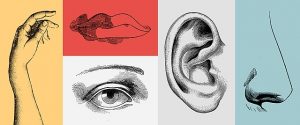BEHAVIORAL TREATMENT AUTISM
How can we intervene to make the lives of children diagnosed with autism easier?
Different Autistic individuals will need individualized treatment methods for their needs. Treatment of Autism is generally best using a combination of medications and behavioral interventions. This article will further explain the behavioral interventions that are commonly used in the treatment of autism.
How many behavioral treatments for autism have been scientifically proven?
Is there a cure for autism?
The causes of Autism have not been fully identified. As a result, there is currently no cure for autism, there are treatments that can teach autistic people skills, enhance their quality of life, and give everyone hope. Behavioral management therapy, cognitive behavior therapy, and applied behavioral therapy are all possible forms of treatment. Applied behavioral therapy, a scientific and individualized approach to understanding and modifying behavior, is a popular treatment option for autistic persons.
Why is autism a lifelong disorder?
Autism is a lifelong disorder because it is a developmental disorder that affects how a person communicates and interacts with others. There are both genetic and environmental causes that affect structure of the underlying brain in Autism resulting in lifelong condition. It is typically present from early childhood and continues throughout a person’s lifetime. While some individuals with autism may show significant improvement with early intervention and therapy, many continue to experience challenges with social interactions and communication throughout their lives.
Why are there more safety concerns when dealing with autistic children than neurotypical children?
Parents are often concerned about the safety of their kids in regarding to wandering, sensory issues, and inability to express themselves. Some children with Autism may also engage in repetitive behavior which can be harmful to themselves resulting in injury.
What are some common challenges faced by parents with autistic children?
Parents struggle in terms of dealing with children with Autism because their kid can’t talk to them. Further, managing the behavior of the child is difficult because it requires specialized intervention to teach the child self-regulation. Coordinating and accessing those services is also a challenge for parents. Parents of children with Autism have to also balance the needs of their Autistic child with the others members of the family. This also includes parents being able to manage their own emotions when it comes managing caretaker stress.
What is Applied Behavioral Analysis therapy?
Applied behavior analysis (ABA) is a type of therapy that is based on the principles that behavior is affected by environmental factors. ABA therapy is an evidence-based treatment for autism spectrum disorder. The goal of ABA therapy is to increase desirable behaviors and decrease undesirable behaviors. ABA therapy does this behavioral change by using reinforcement, such as rewards or praise, to encourage desired behaviors and consequences, such as time-outs or the removal of reinforcing items, to decrease undesirable behaviors. ABA therapy is used to teach new skills, improve social and communication abilities, and manage problem behaviors.
Who does Applied Behavioral Analysis therapy for children with Autism?
ABA therapy is typically delivered by a team of trained professionals, including a board-certified behavior analyst (BCBA) or other qualified therapist.
What are the strategies used in applied behavioral analysis for children with Autism?
- Positive reinforcement: reinforcing desired behaviors with rewards or praise
- Discrete trial training: breaking skills down into small steps and teaching them through structured trials
- Naturalistic teaching: using everyday activities and environments as opportunities for teaching and reinforcing skills
- Social skills training: teaching social skills and behaviors
What is the history of ABA therapy?
As our understanding of Autism grows, so does our toolkit for treatment. The origins of ABA can be traced back to the early 20th century with the work of psychologists such as Ivan Pavlov, B.F. Skinner, and Edward Thorndike. In the 1960s and 1970s, ABA therapy was developed and refined by psychologist Ole Ivar Lovaas and his colleagues at the University of California, Los Angeles (UCLA). ABA has a track record of being tested and proven for decades in the treatment of behavioral conditions including Autism.
How well do therapies like ABA work at helping an autistic person recover behaviorally?
Approximately 30% of kids with autism who participate in intensive early high-quality ABA therapy behaviorally recover from autism. This means that 30% of autistic people go on to be indistinguishable from their peers, while 70% of autistic individuals make substantial progress.
How many kids have access to ABA therapy?
Fewer than 20% of children diagnosed with autism have access to ABA therapy. This is due to the high demand for ABA and limited number of qualified professional providers. There is also a significant time commitment of ABA therapy requiring sometimes 40 hours per week.
What is sensory overload in Autism?
Sensory overload refers to a state in which an individual experiences an overwhelming amount of sensory information that is difficult to process or manage. Sensory overload can be experienced by anyone, but it may be more common in individuals with autism spectrum disorder (ASD). Sensory overload can be triggered by a wide range of stimuli, including loud noises, bright lights, strong smells, or certain textures. Symptoms of sensory overload may include feeling overwhelmed or anxious, becoming agitated or distressed, or having difficulty focusing or paying attention.
What can parents do to help children struggling with sensory overload?
It may be helpful for individuals with ASD to create a sensory-friendly environment by reducing or eliminating unnecessary stimuli, such as loud noises or bright lights. Using sensory tools and strategies, such as earplugs, noise-cancelling headphones, or fidget toys, can also be helpful for managing sensory overload. It may be helpful for individuals with ASD to have a designated quiet space or “sensory break” area where they can go to relax and de-stress when they are feeling overwhelmed. It can also be helpful for individuals with ASD to have access to supportive resources, such as a therapist or counselor, who can provide guidance and support in coping with sensory overload.

